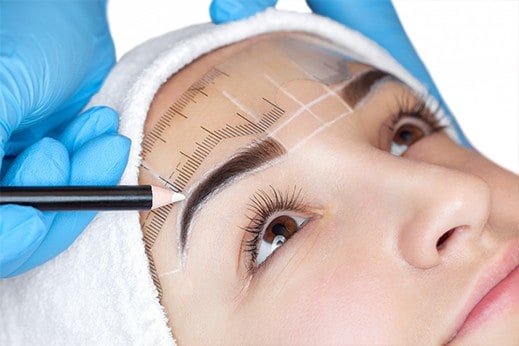
Most small business owners are ready to open back up for business, but are they prepared to do so safely?
At the start of this week, 45 of the nation’s 50 states were in some stage of reopening from the COVID-19 quarantine. In some states, this meant that barbershops, spas, and salons are ready to open for business again, however, in other states, these businesses may remain shuttered until a yet-to-be-determined date.
It’s understandable why business owners are in a hurry to reopen. Weeks and in some cases, months of lost revenue takes time to make up, and no matter how different it may look this year, the summer season is fast approaching. But owners must be sure to open for business in a safe manner that protects both employees and customers from COVID-19 infection, for fear of a further increase in cases sending our communities right back to where we were in March and April.
To that end, the Occupational Safety and Health Association (OSHA) has released a 35-page pamphlet entitled Guidance on Preparing Workplaces for COVID-19. The guide takes owners through occupations ranging from low risk to elevated risk and covers all sorts of scenarios, but before any of that, the pamphlet starts quite poignantly with the Occupational Safety and Health Act of 1970:
“To assure safe and healthful working conditions for working men and women; by authorizing enforcement of the standards developed under the Act; by assisting and encouraging the States in their efforts to assure safe and healthful working conditions; by providing for research, information, education, and training in the field of occupational safety and health.”
What Is COVID-19?
The question seems unnecessary at this point, but OSHA includes the background of the outbreak to reinforce the means by which this virus spreads, and how quickly this can occur and cripple a community’s economy.
Originating from Wuhan, China at a time that is under great debate, but largely believed to be towards the end of November 2019, it took just a matter of weeks for this novel coronavirus to move into Europe and eventually North America, leading to extended shutdowns and lockdowns of communities and in some cases entire nations. This is common knowledge at this point, but it underscores just how quickly such an outbreak could engulf a hair salon or spa.
“Employers who have not prepared for pandemic events should prepare themselves and their workers as far in advance as possible of potentially worsening outbreak conditions,” reads the OSHA brochure. “Lack of continuity planning can result in a cascade of failures as employers attempt to address challenges of COVID-19 with insufficient resources and workers who might not be adequately trained for jobs they may have to perform under pandemic conditions.”
OSHA encouraged businesses to use the pamphlet as guidance for identifying risk levels in workplace settings and determining necessary controls to implement.
Spread of Virus and Necessary Steps for Containment
Six feet has become the accepted definition of safe social distancing and is obviously not feasible for a person working in the cosmetology field. Hairdressing and other tasks require extended close contact with customers.
Yet people in this field are not automatically thought to be at high risk for transmission in the workplace. Mitigation factors such as wearing masks (both customer and cosmetologist), wearing gloves (for the professional), and creating plexiglass or other partitions between workstations (employer’s responsibility) can reduce interpersonal contact and hopefully stop the spread of the virus from any potentially infected individual.
For people or employees considered to be at medium exposure risk, OSHA outlines steps to be taken to lower the probability of virus spread:
Engineering Controls
- Install physical barriers, such as clear plastic sneeze guards, where feasible.
Administrative Controls
- Consider offering face masks to ill employees and customers to contain respiratory secretions until they are able to leave the workplace (i.e., for medical evaluation/care or to return home). In the event of a shortage of masks, a reusable face shield that can be decontaminated may be an acceptable method of protecting against droplet transmission.
- Keep customers informed about symptoms of COVID-19 and ask sick customers to minimize contact with workers until healthy again, such as by posting signs about COVID-19 in stores where sick customers may visit (e.g., pharmacies) or including COVID-19 information in automated messages sent when prescriptions are ready for pick up.
- Where appropriate, limit customers’ and the public’s access to the worksite or restrict access to only certain workplace areas.
- Consider strategies to minimize face-to-face contact (e.g., drive-through windows, phone-based communication, telework).
- Communicate the availability of medical screening or other worker health resources (e.g., on-site nurse; telemedicine services).
Employers must also consider individual risk factors, including but not limited to: advanced age (people ages 65 and higher are known to be at greater risk of serious or critical illness from COVID-19); preexisting medical conditions, especially those that compromise the immune system; and pregnancy.
Businesses are advised to follow state and local recommendations (more on these later) regarding the development of contingency plans for situations that may arise as a result of outbreaks, such as:
- Increased rates of worker absenteeism.
- The need for social distancing, staggered work shifts, downsizing operations, delivering services remotely, and other exposure-reducing measures.
- Options for conducting essential operations with a reduced workforce, including cross-training workers across different jobs in order to continue operations or deliver surge services.
- Interrupted supply chains or delayed deliveries.
The return to normalcy will be a slow process, likely to feature interruptions or setbacks along the way. But getting back to some semblance of normalcy is essential for the survival of small businesses across the United States. Taking steps to ensure the safety of workers and customers will make the process a smoother, faster experience for everyone.
We know you’re ready to open up again for business, but make sure you keep your customers and employees in mind when you do.
For more detail read the official OSHA Guidelines: https://www.osha.gov/Publications/OSHA3990.pdf
For guidelines by state:
Ohio
Florida
Texas
Georgia






